Table of Contents
ToggleIn open loop mode there is no feedback present in between ouput and input. There are three open loop configuration of Op-amp.
1) Differential amplifier
2) Inverting amplifier and
3) Non-inverting amplifier
Differential Open Loop Amplifier
In the differential amplifier input is applied to both inverting and non-inverting terminals. There is no feedback present in the circuit.
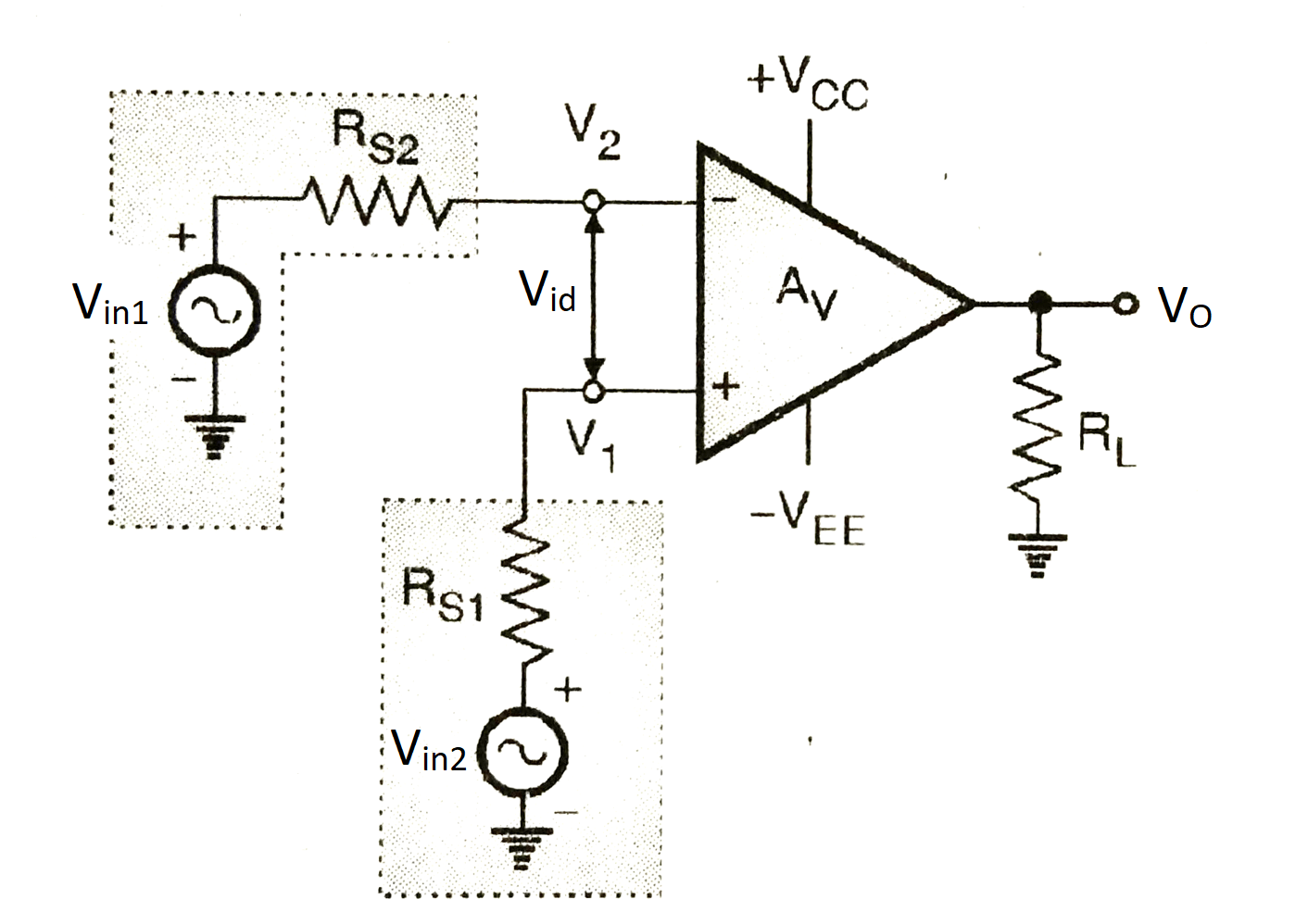
Figure shows the open loop differential amplifier in which input signals Vin1 and Vin2 are applied to the non-inverting and inverting input terminals respectively.
Here Rin1 and Rin2 are negligible compared to input resistance Ri.
Since the Op-amp amplifies the difference between the two input signals, this configuration is called differential amplifier. As no feedback is present in this differential configuration, it is known as Open loop differential configuration of Op-amp.
As Vo = A Vid
= A (V1-V2)
∴ Vo = A (Vin1 – Vin2)
Thus the output voltage is equal to the voltage gain (A) times the difference between the two input voltages.
Inverting Open Loop Amplifier
In the inverting amplifier, input voltage is applied at the inverting input terminal and the non- inverting terminal is grounded. There is no feedback present in the circuit.
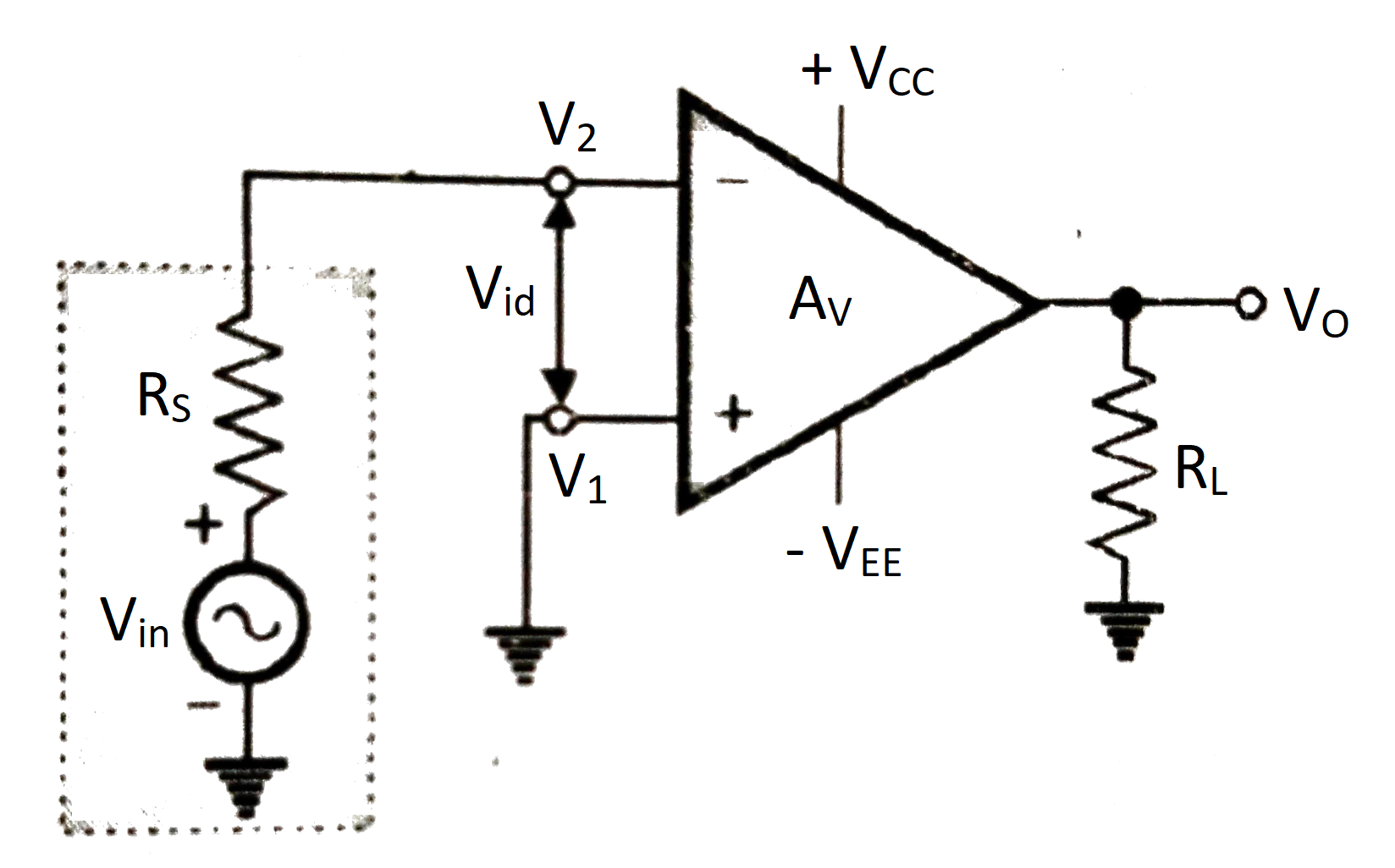
As Vo = A.Vid
= A (V1 – V2)
Since, V1= 0 V and V2= Vin
∴ Vo= A (0 – Vin)
∴ VO = – A Vin
The negative sign indicates that the output voltage is out of phase by 180° from input.
In this, the input signal is amplified by gain A and is also inverted at the output. No feedback is present in this inverting configuration hence it is known as Open loop inverting configuration of Op-amp.
Following figure shows the input-ouput waveform of inverting open loop amplifier.
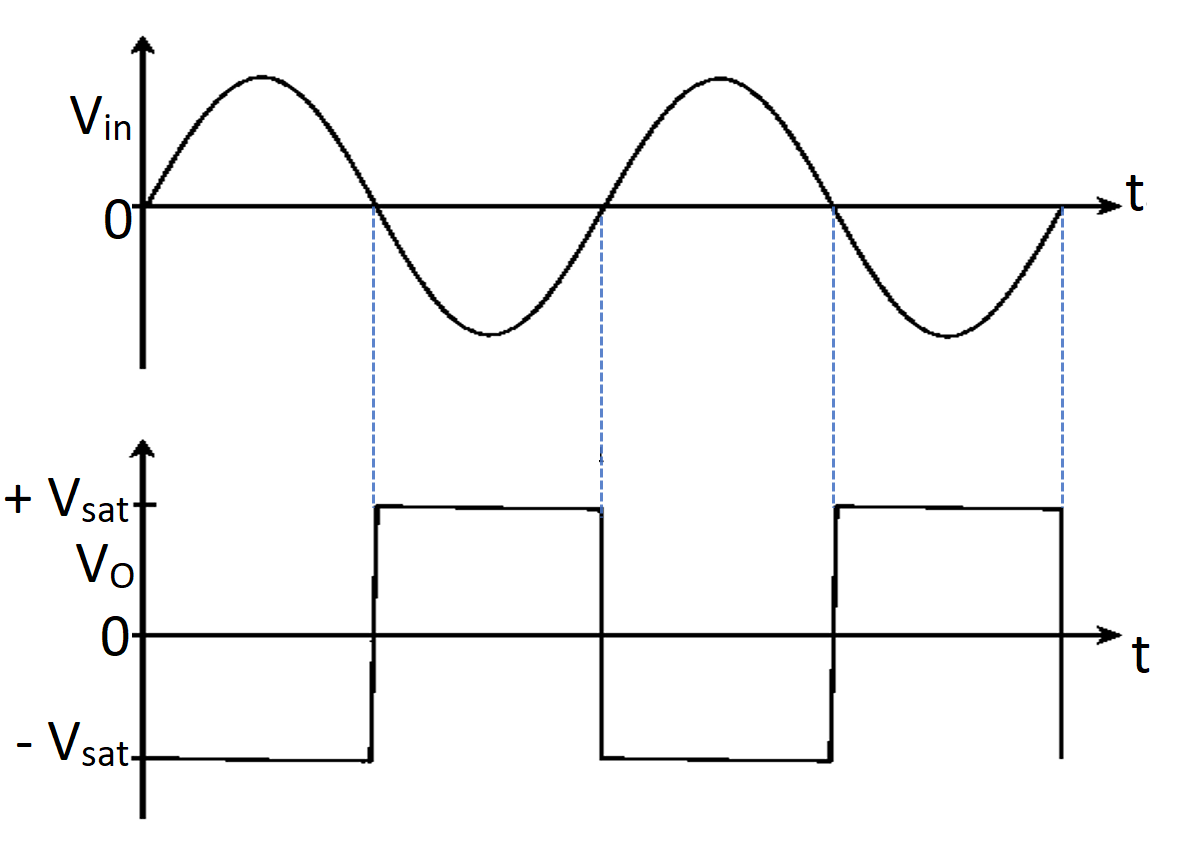
Non-inverting Open Loop Amplifier
In non-inverting amplifier, input voltage is applied to the non-inverting terminal and the inverting terminal is grounded. There is no feedback present in the circuit.
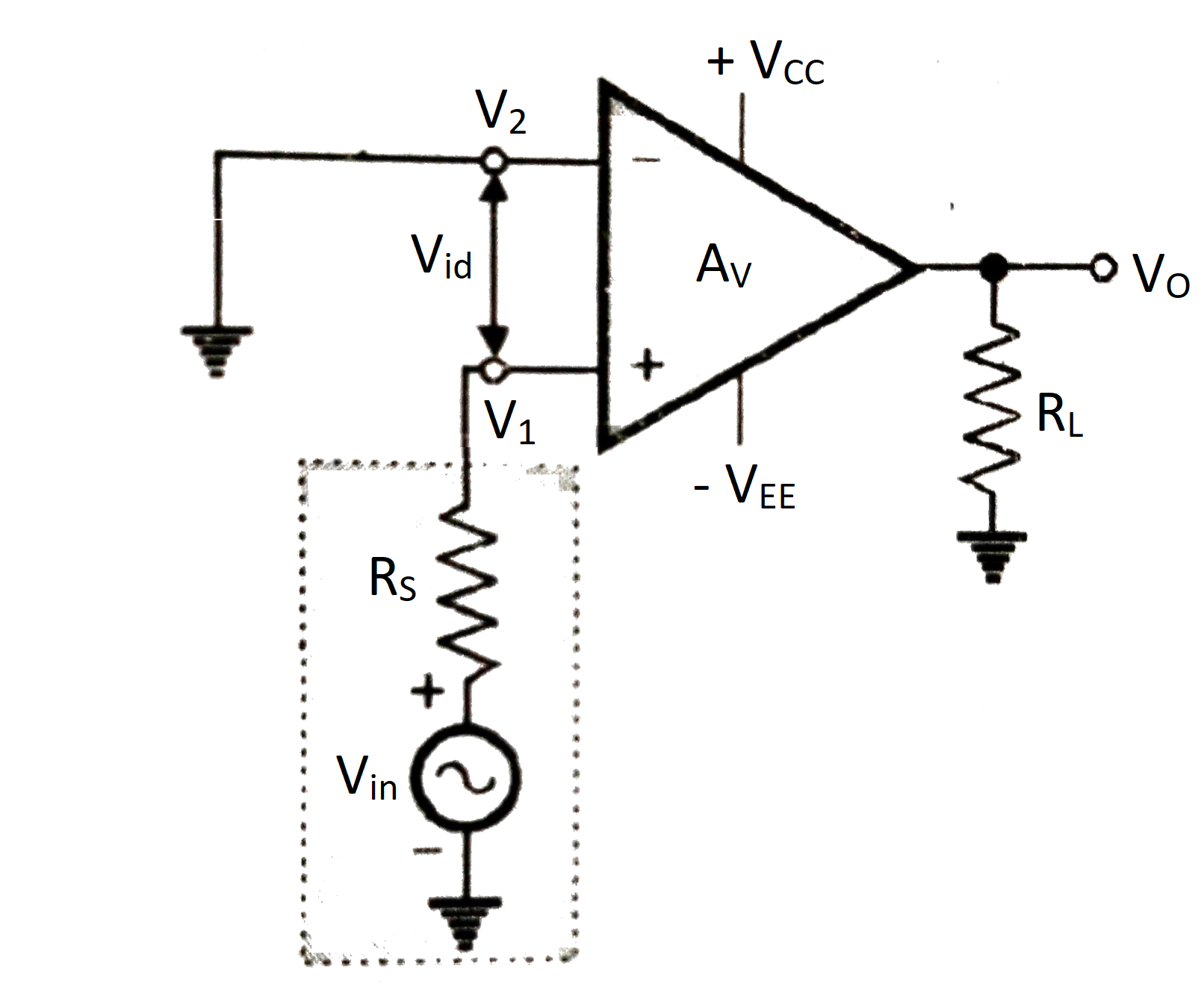
As Vo = A Vid
=A (V1 – V2)
Since, V1= Vin and V2=0;
∴ VO = A (Vin – 0)
∴ Vo = A Vin
There is positive sign in above equation. This means that the output voltage is larger than the input voltage by gain A and in phase with the input signal.
As the input signal is not inverted at output, it is a non-inverting amplifier. No feedback is present in this non-inverting configuration hence it is known as Open loop non-inverting configuration of Op-amp.
Following figure shows the input-ouput waveform of non-inverting open loop amplifier.
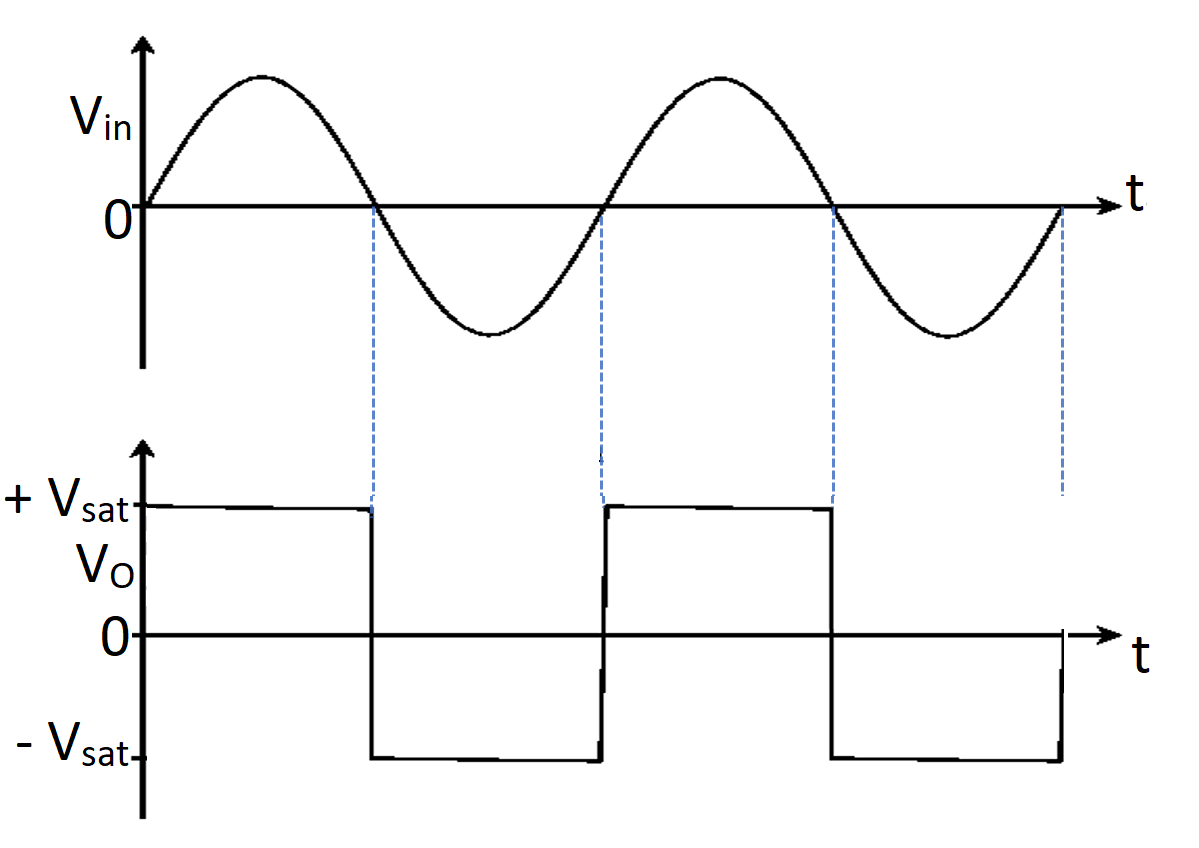
Why open loop configuration of op-amp is not used for amplification?
The output should be linear for an amplifier. Moreover, an amplifier should also responds to small changes in output.
For example, an amplifier should amplify a signal to 1V, 2V or 1.5V etc.
In all above three open loop configuration, the output of the Op-amp is either negative or positive saturation. A saturation voltage is maximum voltage that a circuit can provide.
The gain of op-amp is so high that it will always put op-amp in saturation. In conclusion, the op-amp switches between positive and negative saturation level in these modes. Therefore, open loop configuration is not used in linear applications.

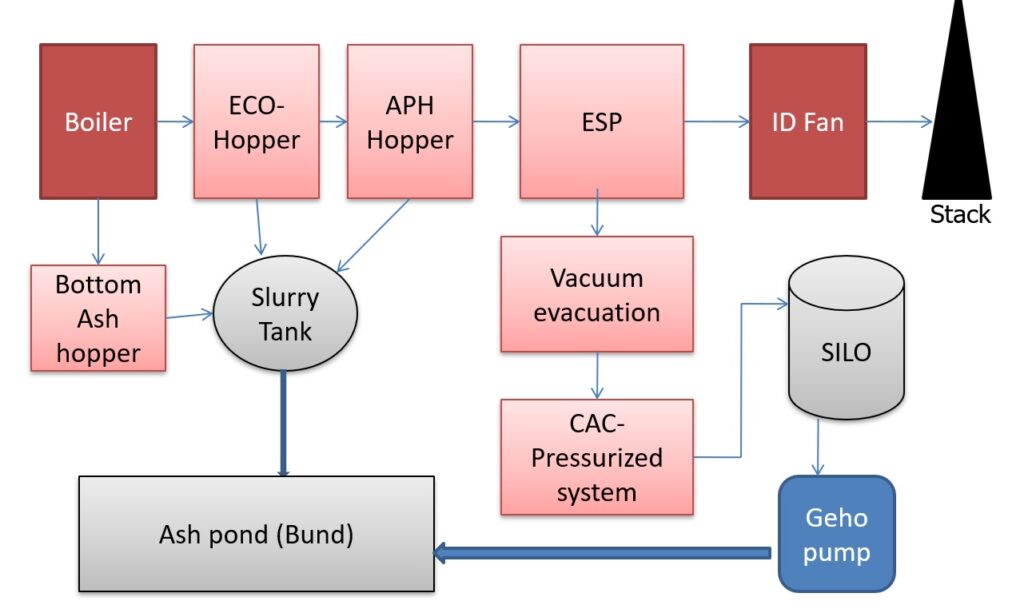

To the electronicsforyou.in administrator, Your posts are always well-formatted and easy to read.
Hello electronicsforyou.in owner, Keep up the good work, admin!